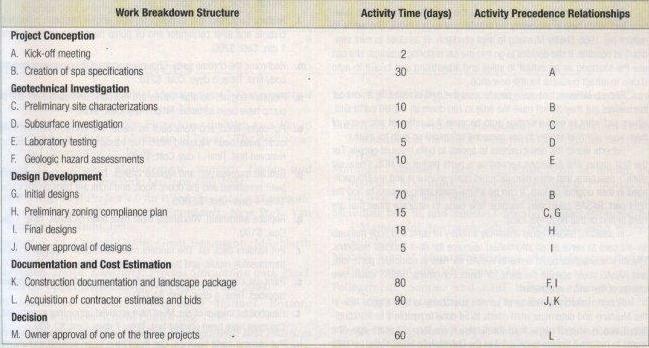The Phoenician in Phoenix, Arizona, is part of Starwood's Luxury Collection and its only AAA Five Diamond
Question:
The Phoenician in Phoenix, Arizona, is part of Starwood's Luxury Collection and its only AAA Five Diamond Award resort in the Southwestern United States. Sophistication, elegance, and excellence only begin to describe the guest experience at the hotel. Guests can dine in one of nine restaurants, relax poolside, play tennis, take in 27 holes of golf on three 9-hole courses, or relax with a variety of soothing spa treatments at the 22,000-square-foot Centre for Well-Being.
The Phoenician recently embarked on an ambitious $38 million spa and golf renovation program. The resort's golf and spa programs historically earned high marks from surveys in their industries over the years, but the environment was changing. Evidence of this change was seen in the explosive growth of new golf courses and spas in the Southwest region. Phoenix alone has over 275 golf courses, and the Southwest boasts the largest concentration of new luxury spas anywhere. The Phoenicians' facilities, while world- class and highly rated, were more than 15 years old. The hotel's recently awarded Five Diamond status renewed emphasis on bringing every process and service at the property up to Five Diamond level.
The decision to renovate the golf course and existing spa became not a question of whether to undertake the projects, but to what degree they needed to be pursued. Key considerations centered on (1) whether to build basic facilities or commit to the grandiose luxury level, (2) having a domestic versus international reputation, and (3) developing creative packaging of the new facilities to attract loyal guests, such as through a spa and golf "country club-like" membership program. Such a program would be limited to about 600 spa/golf memberships, with a one-time fee of $65,000 each.

The company's senior management considered three options for the Centre for Well-Being spa. First, the existing space in the heart of the resort could be renovated. This option would require relocating the spa to another part of the resort and offering limited treatments during this time, thereby reducing spa revenues significantly. With option 2, hilly terrain directly behind the resort could be carved out to create a new mountainside facility with sweeping vistas. This option meant the closure of one of the hotel's buildings housing 60 guest rooms and suites during the construction period. The existing spa could remain open, how- ever. Under option 3, a parking structure on existing hotel property could be used, having the least impact on revenues. The first option was seen as a short-term fix, while the remaining two were viewed as having longer-term potential.
Additional discussion centered on the type of spa to be built. Recent acquisition of the Bliss spa brand for Starwood's W Hotels was an option, offering day spa amenities and an indulgence atmosphere. The second option was to remain a holistic resort spa with an emphasis on health and restoration. The third option was to become a destination spa with dedicated guest stays and week-long programs. Day spas are the fastest-growing category, with few destination spas.
The Phoenician management team, with assistance from Starwood Field Operations and Corporate offices, prepared an extensive analysis of strengths, weaknesses, opportunities, and threats to better understand the environment. The result of this analysis was used by the team to identify the set of activities necessary for each option. The Corporate Design and Construction group developed architectural and engineering plans, as well as the work breakdown structure and diagrams showing the critical path for the possible project options. The work breakdown structure, activity times, and activity precedence relationships are shown in the following table:

When the Phoenician, a luxury hotel in Phoenix, Arizona, sought to redesign its spa facilities, its management team created a work breakdown structure in order to compare different project options and choose the best one.
QUESTIONS
1. Coordinating departments in a major project is always a challenge. Which departments within the Starwood organization likely played a role in each of the following project related activities?
a. Defining and organizing the project
b. Planning the project
c. Monitoring and controlling the project
2. Many times, project decision makers do not rely solely on financial hurdles, such as return on investment or internal rates of return, but put a lot of weight on intangible factors. Which are the salient intangible factors associated with selecting one of the three options for the spa?
3. Timing is always a challenge in managing projects. Construct a network diagram for the spa selection process. How soon can The Phoenician management make a decision on the spa?
Step by Step Answer:

Operations management processes and supply chain
ISBN: 978-0136065760
9th edition
Authors: Lee J Krajewski, Larry P Ritzman, Manoj K Malhotra





